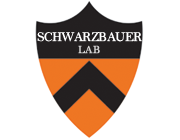Promoting Neuronal Outgrowth Using Ridged Scaffolds Coated with Extracellular Matrix Proteins
Type
Spinal cord injury (SCI) results in cell death, demyelination, and axonal loss. The spinal cord has a limited ability to regenerate, and current clinical therapies for SCI are not effective in helping promote neurologic recovery. We have developed a novel scaffold biomaterial that is fabricated from the biodegradable hydrogel oligo(poly(ethylene glycol)fumarate) (OPF). We have previously shown that positively charged OPF scaffolds (OPF+) in an open spaced, multichannel design can be loaded with Schwann cells to support axonal generation and functional recovery following SCI. We have now developed a hybrid OPF+ biomaterial that increases the surface area available for cell attachment and that contains an aligned microarchitecture and extracellular matrix (ECM) proteins to better support axonal regeneration. OPF+ was fabricated as 0.08 mm thick sheets containing 100 μm high polymer ridges that self-assemble into a spiral shape when hydrated. Laminin, fibronectin, or collagen I coating promoted neuron attachment and axonal outgrowth on the scaffold surface. In addition, the ridges aligned axons in a longitudinal bipolar orientation. Decreasing the space between the ridges increased the number of cells and neurites aligned in the direction of the ridge. Schwann cells seeded on laminin coated OPF+ sheets aligned along the ridges over a 6-day period and could myelinate dorsal root ganglion neurons over 4 weeks. This novel scaffold design, with closer spaced ridges and Schwann cells, is a novel biomaterial construct to promote regeneration after SCI.

